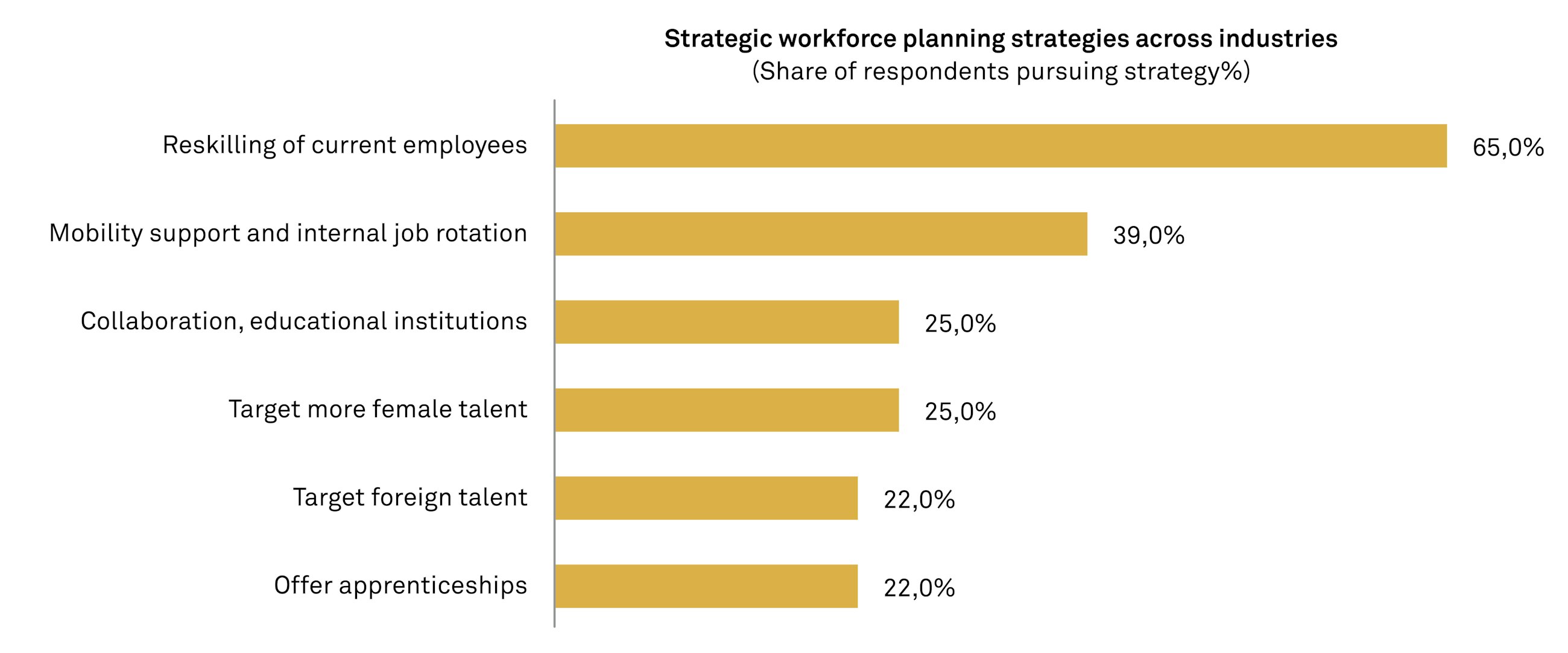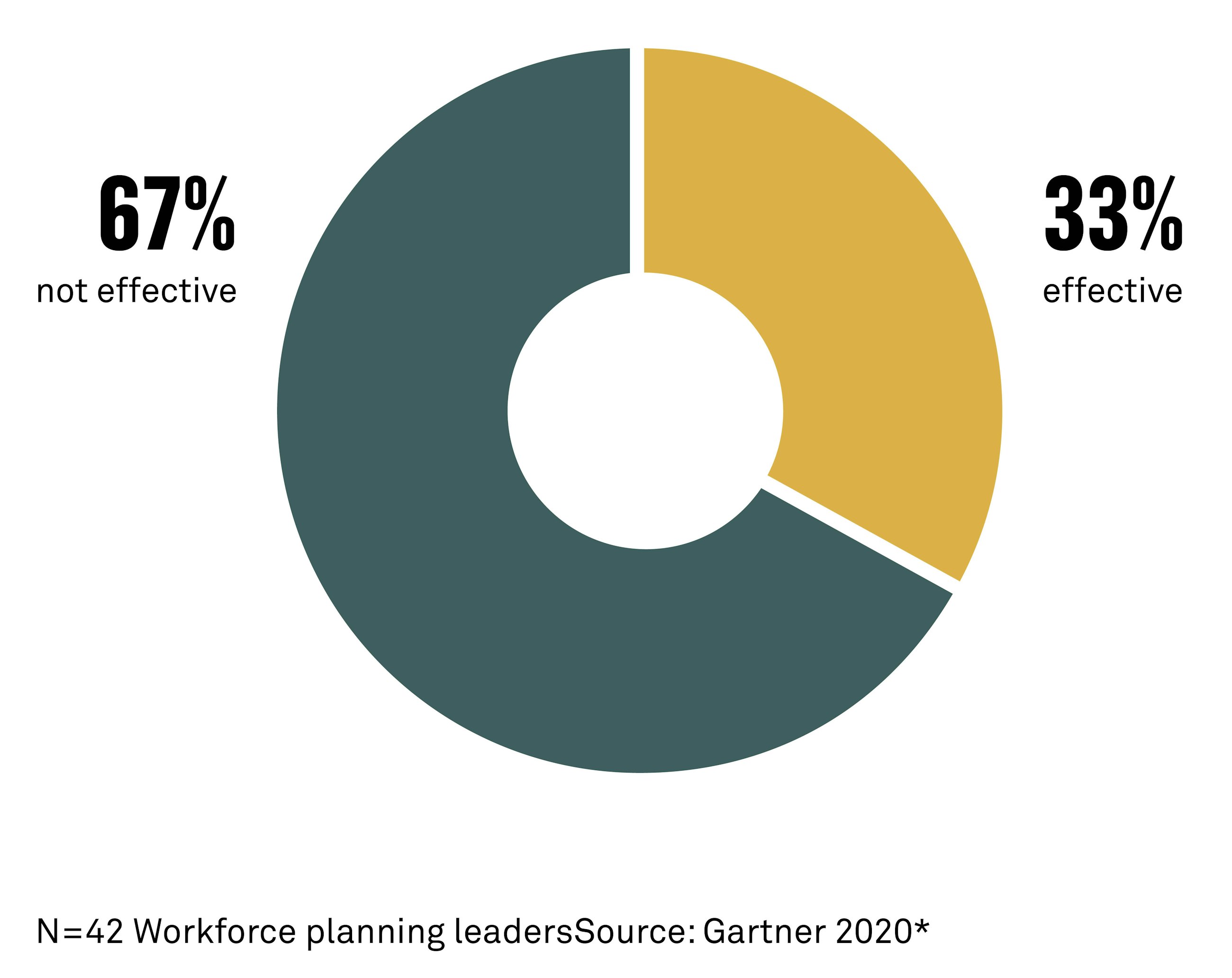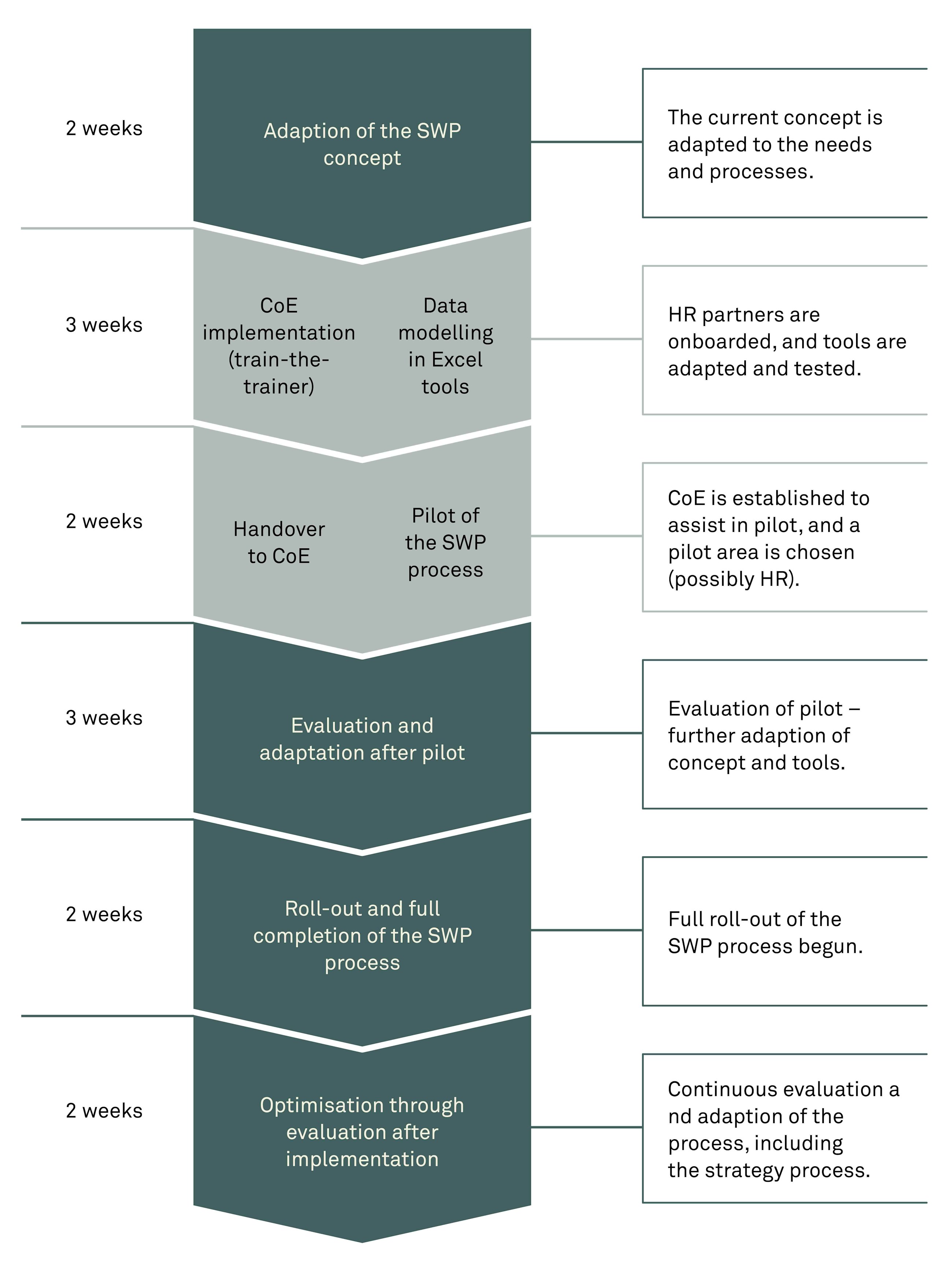Tool
A holistic approach for reaching the full value of your next strategic workforce planning project
Published
17 May 2021
Strategic workforce planning at a glance – an Implement approach
How do implement work with strategic workforce planning?
- We build on years of experience with workforce planning and provide a people-centric and data-driven approach.
- We have the digital tools to facilitate the process, and through a comprehensive, yet simple, framework, we will professionalise and streamline your company’s people SWP process.
- We work collaboratively with you, we connect with your HR department and through co-creation, we ensure an impactful SWP process.
What is strategic workforce planning
Strategic workforce planning is a process that supports organisations in meeting their short-term and long-term objectives by ensuring that the right number of people with the right skills are employed in the right place at the right time.
Why strategic workforce planning
The goal of strategic workforce planning is to facilitate that aligned and data-driven talent decisions are made. These decisions should be linked to your company’s strategic priorities and will build a bridge between your corporate and people strategies.
When conducting an SWP project, you need to consider cost, time, place, skills and people
Hiring costs: Recruitment is more than just salary. You must remember things such as onboarding and the administrative burden of recruitment and calculate metrics such as time to fill and time to productivity.
Timing and availability: You must consider your timing and available staff when recruiting. Even though you have a well-functioning workforce, it is still often necessary to acknowledge that recruitment processes can be exhausting.
Redefining “the right place”: The future workplace allows you to hire anyone from anywhere. However, in order to create a sense of belonging, you need to give your employees the opportunity to be physically present with colleagues.
Skills and training: Consider if your current staff can fill out any of the roles you are seeking to fill, and if training and promotion costs will be a cheaper alternative to hiring externally (plus support internal mobility).
People and pipeline: It is essential that you create an overview of average tenure of both younger and older employees as well as a pipeline of key segments of new talent.
The future of strategic workforce planning
The future of SWP is here, and we know that competence is key to staying relevant. Therefore, your company must be able to:
- Project future recruitment and resource needs across the organisation.
- Conduct gap analysis and have a clear strategy for retention, redundancy and recruitment.
- Perform a competency mapping and build competence models.
- Dynamically replan and thereby react to the fast pace of changes, chocks and opportunities in the environment by focusing on strategic rather than detailed operational planning.
When we look at future workforce strategies, investing in reskilling of current employees and supporting mobility are some of the most important factors.
Emerging trends
Implement’s point of view: SWP is key to identifying opportunities for upskilling and internal mobility or initiating collaboration in due time to actually pursue these often demanding but better options than to just hire very costly.
We see three major trends:
#1: Incorporating external labour market data into your SWP.
#2: Changing demographics will have a major impact on workforce plans.
#3: Advanced expectations from younger generations will be in focus.
A data-driven approach to SW
Opportunities within analytics
One of the biggest opportunities for HR and workforce planners is to leverage analytics that span across the entire employee life cycle. With data-driven workforce analytics, you are not only getting the right people on board, but you are also armed with the knowledge needed to make sure they stay.
Using data in workforce planning
According to Gartner, only 33% of companies are successfully utilising their data and analytics resources.
The results of data-driven SWP
- Reducing labour costs
- Identifying skill gaps and areas of succession risk
- Developing strategies for people development
- Targeting identified inefficiencies
- Employee retention initiatives
Implement’s approach to strategic workforce planning
Building on years of experience
Working with SWP, we combine the “hard data” and the ”soft data” to provide you with a comprehensive picture of the “As-Is” state. Our approach to SWP is defined by Implement’s culture and DNA, as we always focus on a close collaboration with our clients, because we believe that every client and project is unique.
An illustrative timeline for our SWP process
What can you expect after performing strategic workforce planning?
Main benefits
- Value improvement and cost reductions.
- Ensuring that your company’s strategy is delivered.
- Increase in productivity.
- Higher quality and timeliness of customer delivery.
- Higher engagement from staff and retention.
- Right-time proactive decision-making.
- Aligned activation of people strategy.
Want to know more?
Case example
Strategic workforce planning concept for public transport provider
The project
The client, a large public transport provider, wanted to implement a concept and tool for translating a 3-year corporate and functional strategy into concrete workforce and competency needs.
Implement assisted in designing a strategic workforce planning (SWP) concept, including processes and tools through a first pilot in the commercial organisation with focus on supporting a strategy of digital transformation.
The project also included capability building, allowing the client to both utilise the planning tool and to enable HR business partners to engage in dialogue with the LoB on leveraging the SWP concept.
The impact
Based on scenarios of future workforce needs, the client could map workforce gaps and identify strategies for filling or closing these gaps. This enabled improved capability for delivering on corporate and functional strategy.
The HR organisation was enabled and empowered to drive the SWP going forward and engage with the business on more strategic discussions on workforce and competency needs in the future.










